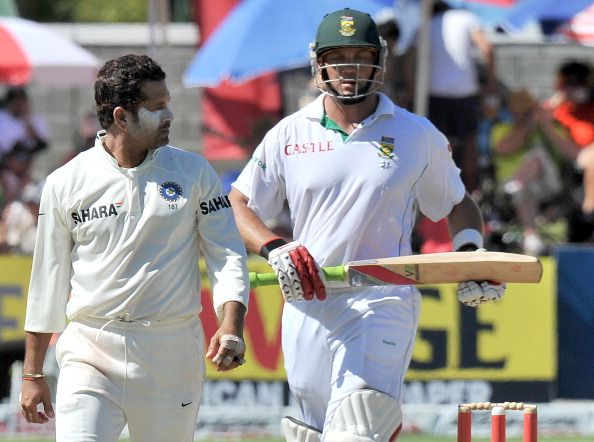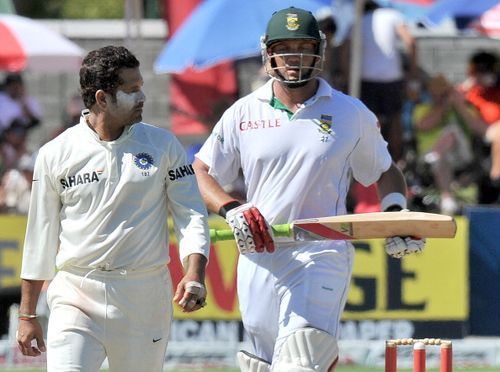
Cricketer of the generation: A futile exercise

Does Sachin Tendulkar’s achievements overhaul the overall contributions of Jacques Kallis?
Sachin Tendulkar was recently named as the cricketer of the generation (1993-2013) by a popular cricket website. Selected by a panel comprising of past and present prominent cricketers and a few eminent cricket writers, the batting maestro was voted ahead of Jacques Kallis and Shane Warne, who were also also short listed for the title.
Anointing the ‘greatest ever’ or choosing a ‘dream XI’ have been the greatest indulges of sports fans across the world even though there are several anomalies that have to be accounted for in selecting them. Comparisons across different eras often involve different conditions, different opponents and in some cases different set of rules which doesn’t make it a fair contest.
The ‘greatest in a generation’ though takes care of the differences. By pitting players of the same time zone against each other seem to level the playing field. In the same generation compatriots go head to head or are up against the same set of challenges that makes comparison more reasonable. It is a raging debate in other sports as well as even after hours of discussions it is hard to establish weather Roger Federer’s serene artistry scores over Rafael Nadal’s resilience or Lionel Messi’s unearthly ball skills is superior to Cristiano Ronaldo’s pace and flair.
However, in a sport like cricket, which involves two different and distinct skills of batting and bowling, trying to weigh up cricketers can be a case of comparing apples and oranges. It is only in cricket that Brain Lara, who didn’t manage a single wicket and Glenn McGrath, a known bunny with the bat, are legends in their own rights.
Tendulkar’s claim to greatness is unquestionable. His longevity, number of runs in both tests and ODIs, 100 international centuries, all done under tremendous pressure and relentless public scrutiny, were beyond comprehension when he began his career. The sheer magnitude of his batting achievements makes you stand up and bow before the little man.
But it cannot be said with conviction that his records surpass that of Warne, who at the time of his retirement was the highest wicket-taker in tests. Bowlers are largely believed to win Test matches and it was Warne’s leg breaks around which the Australian seamers combined to form what was arguably the most potent attack in test history.
A strong case can also be made in favor of Kallis who in the last two decades stood head and shoulders above the other all-rounders. Apart from the tons of runs he scored, which are enough to rate him as a ‘modern day great’, his contributions as a bowler and a slip fielder testify his claim to be the most complete cricketer in last 20 years.
There are also other greats of recent times like Muttiah Muralitharan and Ricky Ponting who couldn’t make it to the top three. While Muralitharan towers over every other bowler with over 1300 international wickets, which makes him the highest wicket taker in both tests and the 50 over format, Ponting, during the course of raking up 13378 test runs featured in a record 108 test wins and was a vital component in as many as 3 victorious World Cup campaigns.
Even batsmen within the same team have different roles to play and employ different methods of approach. A Virender Sehwag’s pulsating century scored in a session and a half will be different in every aspect of batsmanship from a tireless vigil by Rahul Dravid spread over five sessions but both knocks can be equally important from the team’s point of view. To say that one approach is better than the other would be a vague argument.
Moreover, when a player enters the realms of greatness there are several intangible contributions which are beyond measure. From Virender Sehwag and Yuvraj Singh to Virat Kohli and Rohit Sharma; there have been almost two generations of Indian batsmen who claim to be inspired by the exploits of Tendulkar. Warne, on the other hand, is rightly credited for almost single-handedly reviving the dying art of leg spin. With a inimitable streak of aggression and an unerring control over his craft, the legendary spinner aroused fascination over the most difficult art in cricket.
A good way to gauge the value of a sportsman in a team game is to measure what he brought to the table for the team and in that aspect Kallis stands a notch higher than Tendulkar and Warne as for years his dexterity with both bat and ball allowed the South African team to virtually play with 12 members.
While there is such a wide range of scales and parameters none provide the measure of greatness in a definitive term and hence it is not possible to pin point on a single player with certainty as the greatest. Instead of trying to slot one great above the other and undermine the contribution of a few in the process it is imperative to rather celebrate their careers and the rivalry they shared that raised the bar in the game.
However, all said and done, a cricket enthusiast (not the variety that owns IPL teams), who has time to spare, might beg to differ.